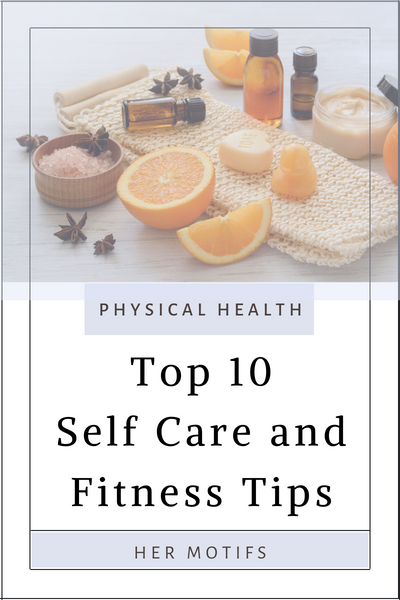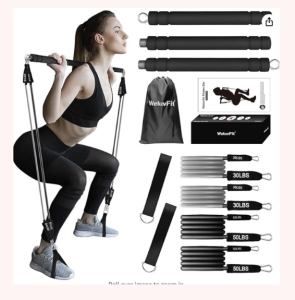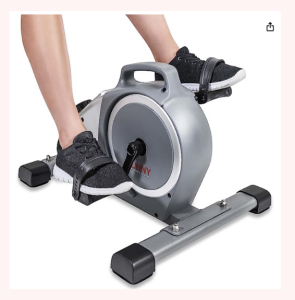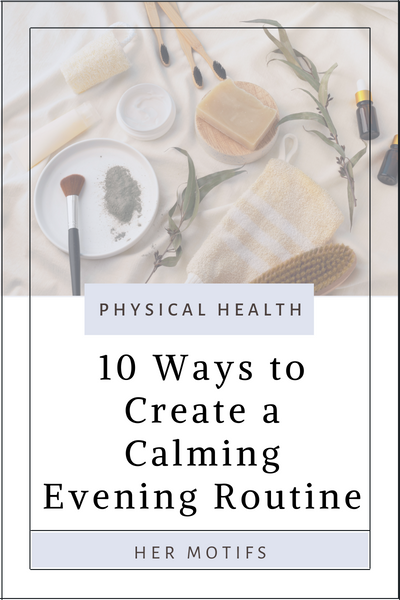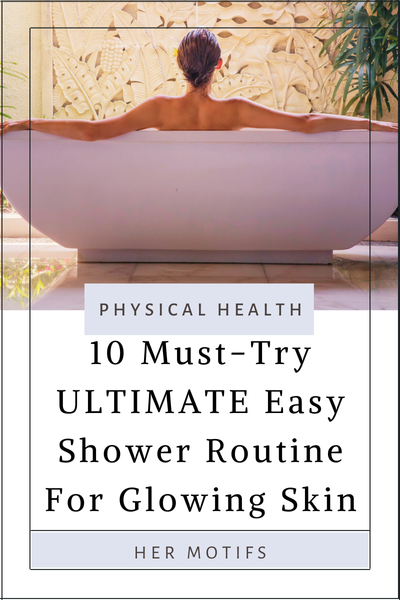Top 10 Self Care and Fitness Tips
 Self Care and Fitness go hand in hand when it comes to maintaining a healthy and balanced lifestyle.
Self Care and Fitness go hand in hand when it comes to maintaining a healthy and balanced lifestyle.
Taking care of your physical and mental well-being is crucial for overall health and happiness.
Self-care encompasses various practices that nurture and rejuvenate your mind, body, and spirit, while fitness involves engaging in regular physical activities to enhance strength, endurance, and flexibility.
Combining self-care and fitness creates a holistic approach to wellness, allowing you to prioritize self-love, self-awareness, and self-improvement.
In this article, we will explore the importance of self-care and fitness, and provide you with valuable tips and strategies to find joy in movement and incorporate self-care practices into your fitness routine.
Get ready to embark on a journey of self-discovery, self-care, and fitness that will transform your life for the better. You can truly create or formulate different steps that will enrich your process. Self care is all about what motivates you, what nurtures you or simply what calms you.
.
.
1. Setting Goals
Setting realistic goals for fitness is an important aspect of self-care as it helps you stay motivated, track your progress, and maintain a positive mindset.
Realistic goals in fitness allows you to establish a clear direction, maintain motivation, and avoid the frustration of unattainable expectations. Below are some goal setting examples
- SMART Goals: Use the SMART framework to set specific, measurable, attainable, relevant, and time-bound goals. For instance, instead of setting a vague goal like “get fit,” set a specific goal such as “run a 5K race in three months.” This allows you to track your progress, break down your goal into manageable steps, and stay focused on achievable milestones.
- Gradual Progression: Start with realistic goals that align with your current fitness level and gradually increase the intensity or duration over time. For example, if you’re new to strength training, aim to perform a certain number of repetitions with a manageable weight and gradually increase the weight or repetitions as you get stronger.
- Focus on Non-Scale Victories: Instead of solely relying on the number on the scale, set goals that focus on other aspects of fitness and well-being. Examples include improving flexibility, increasing stamina, reducing body fat percentage, or mastering a new exercise technique. .
It’s important to remember that everyone’s fitness journey is unique, and progress may vary. By setting realistic goals, you can cultivate a positive relationship with fitness and celebrate your achievements along the way.
.
2. Prioritize Sleep
Make sure you get enough quality sleep each night to support your physical and mental recovery. Aim for 7-9 hours of sleep to wake up feeling refreshed and energized.
Prioritizing sleep is a crucial aspect of self-care for entrepreneurs. Adequate and quality sleep not only allows the body to rest and recover.
- Establish a Consistent Sleep Schedule: Set a consistent sleep schedule by going to bed and waking up at the same time every day, even on weekends. This helps regulate your body’s internal clock and promotes better sleep quality.
- Create a Restful Sleep Environment: Make your bedroom a peaceful and comfortable sanctuary for sleep. Keep the room cool, dark, and quiet. Consider investing in a supportive mattress, cozy bedding, and use relaxation techniques like aromatherapy or white noise to create a soothing sleep environment.
- Implement a Bedtime Routine: Develop a relaxing bedtime routine to signal your body and mind that it’s time to unwind and prepare for sleep. Engage in activities such as reading a book, taking a warm bath, practicing gentle stretching or meditation, and avoiding screens and stimulating activities before bed.
By prioritizing sleep, entrepreneurs can recharge their energy, enhance focus and productivity, and maintain optimal physical and mental health, leading to greater success in their professional endeavors.
.
3. Nutrition for Fitness
Nutrition is a key component of self-care when it comes to maintaining fitness and overall well-being. Fueling your body with the right nutrients can enhance your energy levels, support muscle recovery, and promote overall health. Below are some examples:
- Balanced Macronutrients: To support your fitness goals, it’s important to consume a balance of macronutrients. Carbohydrates provide energy for workouts, proteins support muscle repair and growth, and fats help with hormone production and nutrient absorption.
- Adequate Hydration: Proper hydration is crucial for overall health and fitness performance. Drinking enough water throughout the day helps maintain optimal bodily functions, supports digestion, and regulates body temperature. It’s especially important to hydrate before, during, and after workouts to replenish fluids lost through sweat.
Consulting with a registered dietitian or nutritionist can provide personalized guidance tailored to your specific needs and help you develop a nutrition plan that supports your self-care and fitness goals. By prioritizing nutrition as part of your self-care routine, you can fuel your body for optimal performance and overall well-being.
.
4. Practice Mindfulness
Incorporate mindfulness practices, such as meditation or deep breathing exercises, into your fitness routine. Mindfulness helps reduce stress, improves focus, and enhances overall well-being.
Practicing mindfulness can greatly enhance your fitness journey by helping you stay present, focus on your body, and cultivate a positive mindset. It allows you to connect with your body and exercise in a more intentional and mindful way. Examples includes:
- Mindful Breathing: Paying attention to your breath during workouts can help center your mind and bring awareness to your body. Before starting your exercise routine, take a few moments to focus on deep, intentional breaths. During your workout, continue to tune in to your breath, allowing it to guide your movements and help you stay present.
- Body Awareness: Mindfulness involves being fully present in the moment and tuning in to the sensations and feedback from your body. During your fitness activities, bring your attention to how your body feels, the muscles you’re engaging, and any areas of tension or discomfort.
Incorporating mindfulness practices into your fitness routine can help you build a deeper connection with your body, reduce stress, and enhance the overall experience of exercise. It allows you to be fully present and engaged in the moment, maximizing the benefits of your workouts and promoting self-care through a holistic approach to fitness.
.
5. Find Activities You Enjoy
Engage in activities that bring you joy and make you excited to move. Whether it’s dancing, cycling, hiking, or practicing yoga, choose exercises that resonate with you to make fitness a fun and sustainable part of your life.
- Explore Different Types of Exercise: Experiment with a variety of physical activities to discover what resonates with you. It could be anything from jogging, cycling, swimming, dancing, or attending group fitness classes. Trying different exercises allows you to find something that matches your interests, challenges you, and brings you joy.
- Engage in Outdoor Recreation: Take advantage of the great outdoors and incorporate activities that allow you to connect with nature. Outdoor activities like hiking, trail running, kayaking, or even gardening provide both physical and mental benefits. Being in nature can boost mood, reduce stress, and enhance the overall enjoyment of your fitness routine.
- Incorporate Mind-Body Practices: Consider integrating mind-body exercises into your fitness routine. These activities not only improve physical fitness but also focus on mental well-being and stress reduction. Examples include yoga, Pilates, tai chi, or mindful walking.
By finding activities you genuinely enjoy, you’ll be more likely to stick to your fitness routine and experience greater satisfaction and fulfillment. Remember to keep an open mind, be adventurous, and listen to your body’s cues as you explore different activities. Ultimately, the goal is to make fitness a joyful and sustainable part of your self-care practice.
.
6. Vary Your Workouts
Mix up your fitness routine by incorporating different types of exercises. This prevents boredom, challenges your body in new ways, and targets different muscle groups.
Varying your workouts is an important aspect of self-care in fitness as it helps prevent boredom, stimulates different muscle groups, and challenges your body in new ways. Three examples of how to vary your workouts for fitness self-care:
- Strength Training: Incorporate strength training exercises into your routine to build muscle, improve strength, and enhance overall body composition. Vary your workouts by targeting different muscle groups on different days or alternating between different types of exercises.
- Cardiovascular Exercises: Include various forms of cardiovascular exercises to improve cardiovascular fitness, burn calories, and boost endurance. Instead of sticking to just one type of cardio, such as running on a treadmill, explore different options. You could try cycling, swimming, jump rope, dancing, or even participating in group fitness classes like Zumba or kickboxing.
- Functional Training: Incorporate functional training exercises that mimic everyday movements and improve your overall physical abilities. Functional training focuses on movements that translate into real-life activities, enhancing strength, stability, and flexibility. You can include exercises like squats, lunges, push-ups, planks, and kettlebell swings.
By varying your workouts and exploring different exercise modalities, you can keep your fitness routine fresh, challenging, and engaging. This approach prevents monotony, helps you discover new interests, and allows you to reap the full benefits of a well-rounded fitness program.
.
7. Incorporate Strength Training
Include strength training exercises in your routine to build muscle, improve bone density, and boost metabolism. Strength training enhances overall physical fitness and supports overall health.
Incorporating strength training into your fitness routine is a valuable aspect of self-care. It helps build muscle, increase strength, improve body composition, and promote overall physical well-being. Examples to incorporate strength training for fitness self-care:
- Free Weights: Utilize free weights like dumbbells, barbells, or kettlebells to perform exercises that target specific muscle groups. Examples include dumbbell squats, barbell deadlifts, kettlebell swings, and shoulder presses.
- Resistance Machines: Take advantage of resistance machines available at gyms or fitness centers. These machines provide controlled movements and adjustable resistance, making them suitable for beginners or individuals with specific strength training goals. Examples of exercises you can perform on resistance machines include leg press, chest press, lat pulldowns, and seated rows.
- Bodyweight Exercises: Incorporate bodyweight exercises into your strength training routine, as they require minimal equipment and can be done anywhere. Examples include push-ups, squats, lunges, planks, and burpees. Bodyweight exercises build functional strength and improve muscular endurance.
When incorporating strength training into your fitness self-care routine, it’s important to prioritize proper form, gradually increase weights or resistance, and allow adequate rest and recovery between workouts. Aim for a balanced approach that targets all major muscle groups and includes both compound exercises (working multiple muscle groups simultaneously) and isolation exercises (focusing on specific muscles).
.
8. Connect with Nature
Take your fitness routine outdoors whenever possible. Whether it’s running in the park, hiking a trail, or practicing yoga in nature, immersing yourself in nature enhances the mental and physical benefits of exercise.
Connecting with nature for fitness is not only a way to improve physical health but also a powerful practice for self-care. Below are some of our favorites
- Enhances Mental Well-being: Spending time in nature has been proven to have a positive impact on mental health. Engaging in outdoor fitness activities, such as hiking, cycling, or swimming in natural settings, can help reduce stress, alleviate symptoms of anxiety and depression, and improve overall mood.
- Increases Physical Health Benefits: Exercising in natural environments often provides additional physical health benefits compared to indoor workouts. For example, running on a trail or hiking uphill engages different muscle groups and challenges your balance and coordination.
- Fosters Connection and Mindfulness: Connecting with nature for fitness encourages a deeper connection with the world around you. It offers an opportunity to be fully present and mindful of your surroundings, allowing you to experience the beauty of nature with all your senses. This mindfulness practice can enhance your overall well-being, reduce mental clutter, and promote a sense of gratitude and awe.
Incorporating nature into your fitness routine not only supports your physical health but also nourishes your mind and soul. It provides a break from the hustle and bustle of daily life, rejuvenates your spirit, and instills a sense of awe and appreciation for the natural world.
.
9. Practice Self-Compassion
Be kind to yourself and listen to your body’s needs. Avoid comparing yourself to others and embrace a positive and accepting mindset towards your fitness journey.
Practicing self-compassion for fitness is essential for maintaining a healthy and balanced approach to your physical well-being. This includes the below
- Embracing Rest and Recovery: Self-compassion involves listening to your body’s needs and honoring them, even when it means taking a break or allowing for adequate rest and recovery. Pushing yourself too hard without considering rest can lead to burnout, injuries, and setbacks in your fitness journey.
- Cultivating a Positive Mindset: Self-compassion in fitness involves fostering a positive and supportive mindset towards yourself. Instead of focusing on perceived flaws or shortcomings, practice self-acceptance and self-encouragement. Treat yourself with kindness and understanding, celebrating your progress and achievements no matter how small they may seem.
- Listening to Your Body’s Signals: Self-compassion in fitness means being attuned to your body’s signals and responding to them with care and respect. It involves tuning in to your hunger and fullness cues, eating nourishing foods that satisfy both your physical and emotional needs.
Self-compassion in fitness allows you to develop a healthy and sustainable relationship with your body and exercise routine. It involves being kind and understanding towards yourself, honoring rest and recovery, cultivating a positive mindset, and listening to your body’s signals.
.
10. Create Fitness Routine
Creating a fitness routine is a great way to establish healthy habits and work towards your fitness goals. Here are three examples of how you can create a fitness routine:
The best way to create a fitness routine is to also include self care needs. The more your fitness routine includes activities that you enjoy, you may find it easier to stick with. Below is an example of how to create a fitness routine
1. Example: The Cardio and Strength Combo
- Monday: 30 minutes of cardio exercise (such as running or cycling) followed by 20 minutes of strength training (using weights or bodyweight exercises).
- Wednesday: 30 minutes of cardio exercise (such as swimming or jumping rope) followed by 20 minutes of strength training (focusing on different muscle groups).
- Friday: 30 minutes of cardio exercise (such as brisk walking or HIIT workouts) followed by 20 minutes of strength training (using resistance bands or kettlebells).
2. Example: The Balanced Approach
- Monday: 45 minutes of a group fitness class (such as Zumba or kickboxing) that combines cardio and strength training.
- Wednesday: 30 minutes of yoga or Pilates for flexibility and core strength.
- Friday: 30 minutes of moderate-intensity cardio exercise (such as jogging or using an elliptical machine) followed by 15 minutes of bodyweight exercises (such as push-ups, squats, and lunges)
3. Example: The Active Lifestyle Routine
- Incorporate physical activity into your daily life
- Take the stairs instead of the elevator.
- Walk or bike to work instead of driving.
- Engage in active hobbies like hiking, gardening, or playing a sport.
Remember, these are just examples, and your fitness routine should be tailored to your personal preferences, fitness level, and goals. It’s important to start gradually and listen to your body to prevent injuries. Additionally, consider consulting with a fitness professional for guidance and support in creating a routine that suits your needs.
.
Conclusion
In conclusion, integrating self-care practices into your fitness routine is essential for achieving holistic well-being. Taking care of both your physical and mental health is crucial to maintain a balanced and sustainable approach to fitness.
By prioritizing self-care, you can enhance your overall fitness journey and cultivate a positive and nurturing relationship with your body and mind. Whether it’s prioritizing sleep, practicing mindfulness, nourishing your body with nutritious food, or finding activities you enjoy, self-care and fitness go hand in hand.
.
- 100 Valentine Lovers Questions - February 24, 2025
- 2025 New Year Growth Quotes - February 24, 2025
- 2025 Inspiring Self Love Quotes - February 24, 2025
